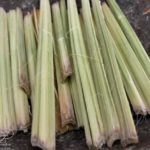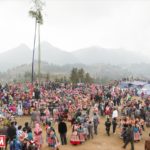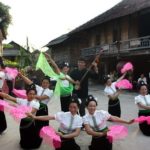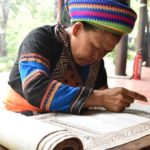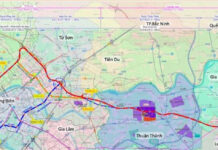Cu Vai Village has symmetrical houses on both sides of the road and 50 households. Situated some 1,000 meters above sea level, the location attracts “cloud hunters”.
The village was built in 2013 for the Mong people who lived in landslide-prone areas to resettle. After nearly 10 years, they have found a better life.
Aside from rice and corn fields, the Mong people have expanded their orchards and livestock farming and maintained their distinctive culture. Cu Vai is also surrounded by valleys and terraced rice fields stretching to the horizon.

The village is ideal for those seeking beautiful landscapes and thrilling experiences. Travelers say that rugged paths and slopes have to be overcome to reach the best cloud hunting location.
Tourists are warned against traveling there on rainy days because of flash floods and landslides.
In spring, the village comes alive with colorful flowers in full bloom.
No traveler can resist the charming views and tranquility of Cu Vai Village.



